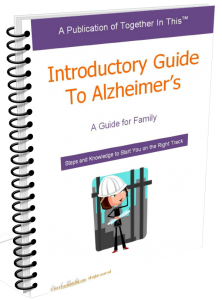This comment was left by Doug Seubert, MPH, CDP on the How to Ensure Dignity with Showering in Later Stage Dementia article. Due to it’s length it has been posted here in it’s entirety:
These are all great tips for helping with showering, and a lot of the “problems” that often arise stem from embarrassment, confusion, and discomfort. So the more we can do to help our love ones bathe with dignity and comfort is very important.
For my mom, I discovered bathing in the late morning or early afternoon was the best for her. She liked to relax in the morning and have a cup of coffee and sit by the window after getting out of bed. Rushing her into the shower just because it was convenient for me as her caregiver or because it “made sense” since she had to use the bathroom in the morning anyway, only caused her to be more agitated, aggravated, and resistant.
Instead, I had to modify my goals and schedule as a caregiver to match what she wanted and needed. That also included telling the clinic not to schedule early morning appointments for her because I knew it would be difficult to get her up and ready before noon.
I also learned that she needed time to rest and recover between stages of the bathing process. Getting undressed, into the shower, being bathed, dried, and helped out to the shower was exhausting for her. So I made sure to be as efficient as possible. So yes, the tip about being well organized and having things ready before the bathing process starts is an excellent tip.
The process usually started in her bedroom with getting undressed and into a robe, and then letting Mom rest a bit before taking her to the shower. During this time I would prepare the bathroom, getting out the towels, and using a portable heater to make the bathroom a bit more warm and cozy. I’d also run the water to get it warm, then turn it off. That way when she did get in the shower it took less time to get to the ideal temperature.
Other things that helped were using an all-in-one shampoo and body wash which eliminated the need for multiple steps and bottles in the shower, and also using a large terrycloth robe as a towel. It’s similar to the towel drapron mentioned in the article, only it’s an actual robe, so it can be worn from the bathroom to the bedroom or other areas of the house and provide dignity because it is an actual robe.
One of the things my mom hated about bathing was the cold. So as soon as she was rinsed and the water in the shower was shut off, I’d have her big fluffy super-absorbent cotton terrycloth robe to put on her before she even stepped out of the shower, along with a towel for her hair and face. It is important to use a cotton robe and towels. There are many microfiber materials out there that are really soft, but the synthetic fibers do not absorb water. So you need to use cotton towels and a cotton robe.
The other thing I did was make sure Mom had a comfortable chair just inside the door of her bedroom. My mom stayed in the largest bedroom that was closest to the bathroom. This way she only had a few steps from the bath to her chair, and she was already wrapped in a warm, thick, cotton robe, so she could sit in her chair as the robe acted as a towel to dry her.
The next thing I would do is move the portable heater from the bathroom to her bedroom so she could feel the warm air lightly blowing at her feet that I also covered with a dry towel, and wrapped another towel over her hair. YES we went through a lot of towels and it made a lot of laundry that I had to do every day, but it wasn’t about my convenience. It was all about her comfort.
When her hair was long I used a hair dryer, but sometimes the noise bothered her. If that’s the case with your loved one, sometimes it’s easier just to allow the hair to air dry.
I would also make sure she had a nice warm cup of coffee or tea she could hold and sip while she rested. I would let her rest there, sometimes 20 to 30 minutes, while I cleaned up the bathroom and shower area and picked out clothes for the day. As Mom continued to rest I would always give her a couple options for the color of shirt she wanted to wear. I tried not to overwhelm her, usually offering two of her favorites and letting her select the one she wanted. Allowing her to have some choice made it easier and allowed her to maintain some control.
Once she had her shirt selected I would select socks that matched, and we started dressing at the bottom. I knelt on the floor and made sure her feet were thoroughly dried using the towel that I used to cover her feet to keep her warm. This allowed me to inspect her feet and legs and apply lotion and we would talk the whole time about what we were going to do that day as I got her socks on.
The next thing was to get the robe open on top and to get her arms out. This exposed her top half and it was awkward for both of us at first, but we eventually got used to it as she realized she needed help and that when we worked together things got done faster. Again I made sure her skin was thoroughly dried and applied lotion to her back and she put lotion on the front.
If your loved one is able, it is important to let them do as much as they can, especially in private areas. My mom (as well as I) would find it uncomfortable if I dried or lotioned her front. I focused on the areas she couldn’t reach, like her feet, legs and back. While she dried and lotioned her front, I could do her shoulders and back which put me behind her so she didn’t see me or feel that I was seeing her while she was exposed.
I also had her put on deodorant and then I helped her put on a t-shirt. It is important to only expose the parts of the body you are working on at the time and to get them covered again as soon as you finish that area. If I left Mom “topless” she would be uncomfortable, so the t-shirt provided dignity, security, and warmth. By now Mom was no longer wearing a brassiere (for comfort it is sometimes necessary to get rid of some things), so the t-shirt also provided support.
Before opening the robe the rest of the way and exposing her private area, I would slip underwear on and up to her ankles and also do the same with her pants. Then I would put on her shoes. That way, when I got her to stand we just had to pull her underwear and pants up. Of course you want to make sure that area is thoroughly dry so you might want to have a clean, soft towel handy. You also want to use this time to inspect the skin, especially on the back side.
I also installed grab bars in her bedroom close to her chair so she had something to help pull herself up with and to hang on to as I pulled up her pants. Once that was done, and while she was still standing, we put on the shirt or sweater she picked out earlier. Then we would go back to the bathroom where she could comb her hair, or maybe I would have her sit and I would style it for her.
Then it was time to brush her teeth unless we did that before the shower. I also helped her put on a necklace because Mom always wore jewelry and it was important for her to feel fully dressed and presentable. So that usually also included a spritz of her favorite cologne on her wrists.
I knew the entire bathing and dressing process would take at least 2 hours. So I made sure to plan for that. Rushing her or skipping steps only caused problems. It is also important to know that a full shower is not necessary every day. So every day, even if she had a full shower, I would guide her in using cleansing wipes to do peri care every time she used the bathroom.
This is especially important if your loved one is wearing incontinence pads or undergarments. It’s not enough to just change the pads and undergarments when they are wet, but the entire area needs to be cleaned and kept dry as much as possible. Not only does this prevent offensive odor, it cuts down on yeast and urinary tract infections. And many times these simple, frequent cleanings are more effective and easier than insisting on a full daily shower.
See the original article at: How to Ensure Dignity with Showering in Later Stage Dementia





Leave a Reply